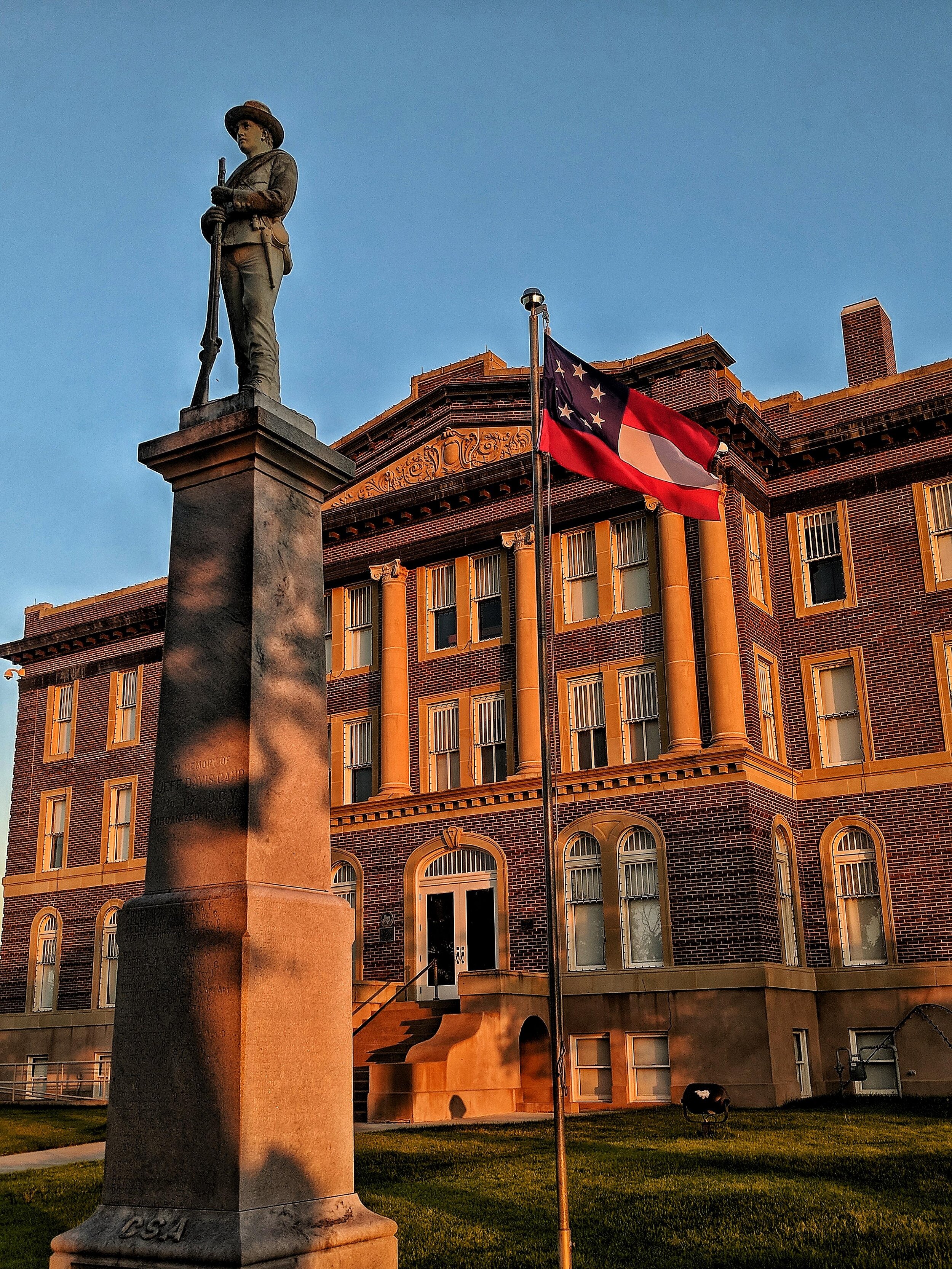
Welcome to Mills County
Worth the Drive.
Goldthwaite, Texas
Goldthwaite, is the county seat of Mills County, located at the junctions of U.S. highways 84, 183, State Highway 16, and Farm roads 574 and 572, in the heart of the county. The town was once a part of southern Brown County in 1885, with the coming of the Gulf, Colorado and Santa Fe Railway, and was named for Joe G. Goldthwaite, the railroad official who conducted the auction of town lots. The post office opened in 1886. After Mills County was organized the following year, a number of landowners donated town site property in exchange for assurances that Goldthwaite would be selected county seat. A county courthouse was completed in 1890; the first county jail, constructed in 1888, is now on the National Register of Historic Places.
The Santa Fe built shops and a roundhouse switch, intending Goldthwaite as a division point, but after labor problems in the town the railroad moved its shops to Brownwood. Even without the railroad, the town flourished. By 1898 it had a population of 1,200, three churches, one bank, a number of hotels and boardinghouses, two cotton gins, two gristmills, a public and a private school, many stores, and two weekly newspapers, the Eagle and the Mountaineer. The 1905 meeting of the Confederate Reunion, a major annual social event, was the largest public gathering in Mills County history.
The courthouse burned in 1912 and was replaced with a brick structure the following year. The county's first school library was established in 1915, the same year construction began on Lake Merritt, seven miles from town. By 1928 Goldthwaite had 2,800 residents and ninety-five businesses. The population fell to 1,324 by 1931, due to drought and economic hard times, and the number of businesses declined to fifty-five by 1933. After the depression years, recovery was modest in Goldthwaite, but agricultural diversification provided prosperity. In 1988 the town's economy was based on wool, mohair, cattle, sheep, pecans, grains, and the production of farm equipment.
Goldthwaite has an estimated population of 1800 with many accommodations. 9-hole municipal Golf Course, a city park, swimming pool, a library with full service which includes internet access, nursing homes, medical services, retail shops, restaurants, motels, RV parks, churches, and banking facilities.
The City has 95% of its streets paved, has a 2% city sales tax, and offers some of the lowest utility rates in the State. The City has no property tax. Goldthwaite has low labor costs, low cost of living and low property cost.
Goldthwaite Independent School District is a Class 1A school and it features a State Championship Football team 1985, 1993, 1994, and 2009. They also excel in band, basketball, track, tennis, golf, and baseball.
Center City, Texas
Center City, on U.S. Highway 84 north of Bennett Creek in eastern Mills County, was settled about 1870. When the county was organized, the town site was laid out with a large area in the center designated as the site for the new courthouse. Built around this square were various businesses, including several saloons, several dry goods stores, two blacksmith shops, a general store, and a drugstore. But Goldthwaite became the county seat. By 1874 Center City had a post office, a gristmill, and a school.
After a survey in the early 1870's designated an ancient live oak standing in the town as the exact center of Texas, the name of the town, which had previously been Hughes Store, was changed to Center City. Controversy was to break out when the tree was later threatened with removal by construction of State Highway 7 (now U.S. 84). Citizens won out, and in 2003 the live oak was still standing fifty feet south of the highway in the middle of a dirt road between Goldthwaite and Evant. The tree is included in Famous Trees of Texas (1970, 1984). Although the tree's exact age is unknown, early settlers were said to have held justice court under its branches until a courtroom could be erected. Early school and church services were held there also.
By 1880, Center City had a church, and in 1885 the community reported a population of 100. In 1910 it had three churches. By 1920 Center City's post office had been replaced by rural delivery from Goldthwaite. In the late 1940s Center City reported three stores and an estimated population of seventy-five. From 1970 through 2003 the community reported a population of fifteen. In 2003, Center City had two churches and a single business, a combination hardware store and gas station.
Mullin, Texas
Mullin, on Mullin Creek, U.S. Highway 84/183, Farm Road 573, and the Santa Fe line, ten miles north of Goldthwaite in west central Mills County, became a town site with the construction of the Santa Fe track through the area in the late 1880s. Both the creek and the town were named for a pioneer family. Among the first businesses in the area were a saloon and a hotel in 1885. Dr. WD Kirkpatrick donated the town site in return for the construction of the railroad through the area. The population of Mullin was 100 in 1890; in 1894 the first permanent schoolhouse was built. A gristmill and cotton gin were among the early businesses. By 1910 the town had three churches, a bank, a weekly newspaper named the Enterprise, and 750 residents. The population fell to 558 by 1920 and 404 by 1947. In 1958 there were only two stores left in the community.
Priddy, Texas
Priddy, on State Highway 16 and Farm Road 218 in northeast Mills County, was named for Thomas Jefferson Priddy, a pioneer Baptist preacher and Texas Ranger. The first homes in the community were built in the early 1880s, primarily by German settlers. Priddy became the first postmaster in 1892. Growth was slow, and in 1910 the community had a store, a gin, and a population of sixty. The population was 170 in 1930, 150 in 1947, and 215 in 1980 and 1990.






